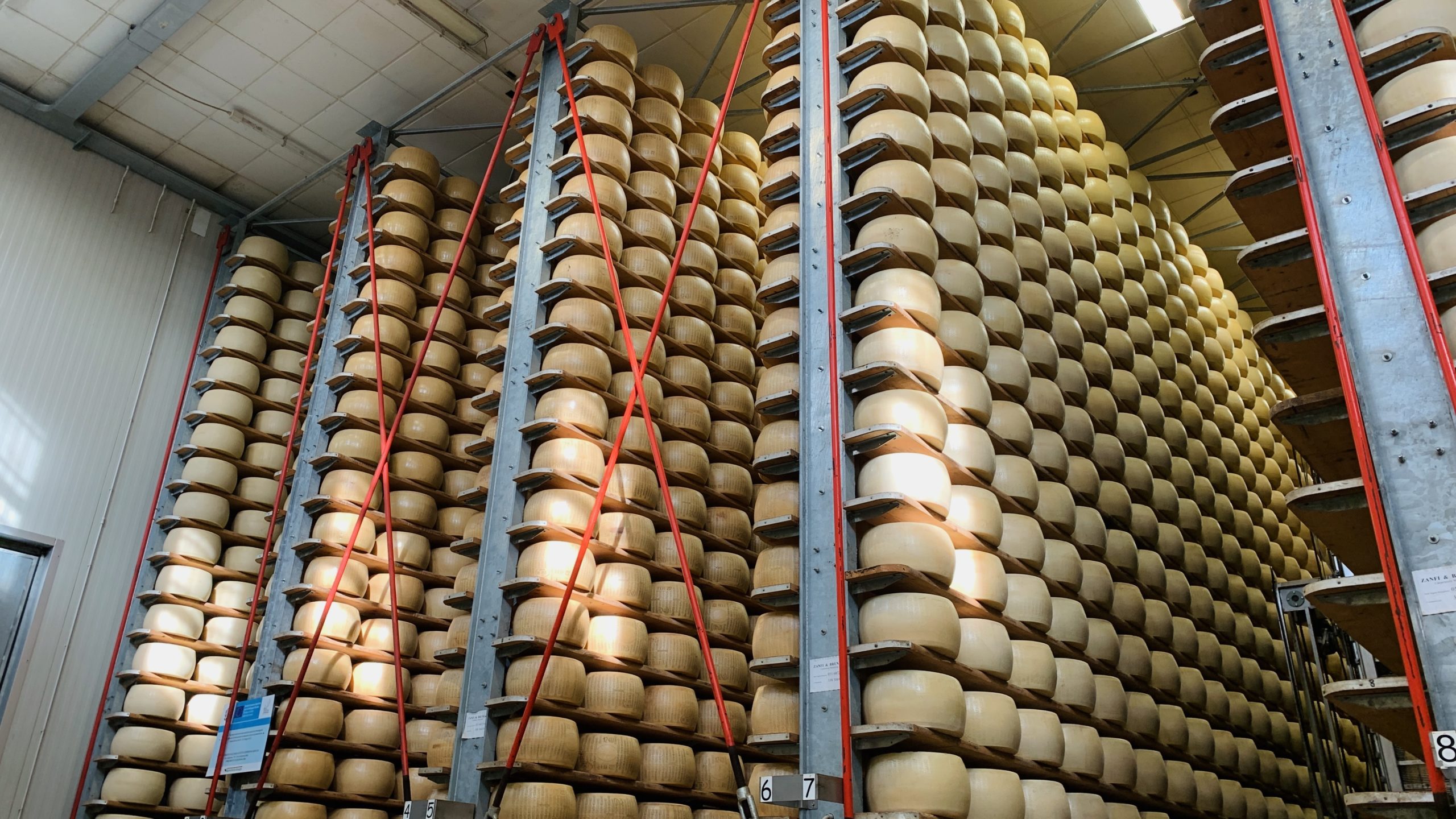
As the birthplace of pizza and pesto, Italy lays claim to some of the most well-known food in the world. Just like Italian cuisine, which varies widely from region to region—think spaghetti alle vongole in Naples and spaghetti carbonara in Rome—the same can be said for Italian cheese. There are more than 2,500 traditional kinds of cheese in Italy, over 50 of which carry the Protected Designation of Origin (PDO) designation from the European Union, meaning they are uniquely tied to the area of production and cannot be made elsewhere.
I recently traveled to Italy to learn about six PDO cheeses from the Emilia-Romagna and Veneto regions as a part of a program to promote cheeses made using milk from the territory of origin. Over three days we toured four different cheesemaking operations and learned about the production methods and subtle nuances that differentiate these hard Italian cheeses from one another.
The first day started at Caesificio Quattro Madonne in Modena where they produce Parmigiano Reggiano PDO. We were guided through the facility and got to see the cheese at every stage, from the make room floor to the aging facility where it is tested for quality before being shipped out. Parmigiano Reggiano gained PDO status in 1996, but its origins date back over 900 years to Benedictine and Cistercian monasteries in the Parma and Reggio Emilia regions. Today there are 350 cheesemaking operations and 3,500 dairy farmers working to produce the nearly four million wheels made every year.
Travel Tip: If you’re traveling to Italy and want to learn about Parmigiano Reggiano PDO, bookmark Caesificio Quattro Madonne. Their tours are open to the public with advanced registration.



Next, we traveled to Verona to see the Agriform aging and processing facility and learn about Grana Padano PDO, the number one selling PDO cheese in the world. Parmigiano Reggiano and Grana Padano are similar cheeses, but with a few key differences:
- Age: Parmigiano Reggiano PDO must be aged a minimum of 12 months, while Grana Padano PDO can be sold at 9 months.
- Milk: Grana Padano PDO is made with the evening milk only, Parmigiano Reggiano PDO is made with evening and morning milk. This means Parmigiano Reggiano has a higher fat content, thus why it requires a longer aging period.
- Feed: Silage is not allowed to be fed to cows whose milk will be turned into Parmigiano Reggiano PDO.
- Ingredients: Both cheese use the previous day’s whey as a starter culture and have the same basic ingredients, milk, salt, and rennet, but Lysozime (an additive that inhibits bacterial growth in silage) is allowed in Grana Padano PDO.
- Quantity Produced: 3,800,000 wheels of Parmigiano Reggiano PDO are produced annually, versus 5,000,000 wheels of Grana Padano PDO.

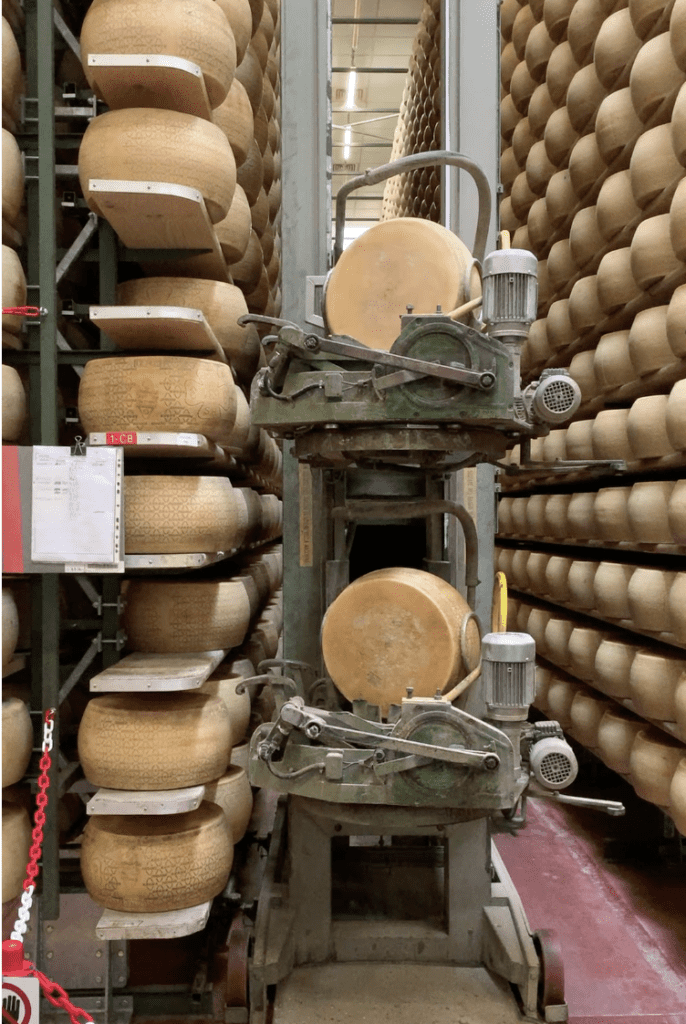

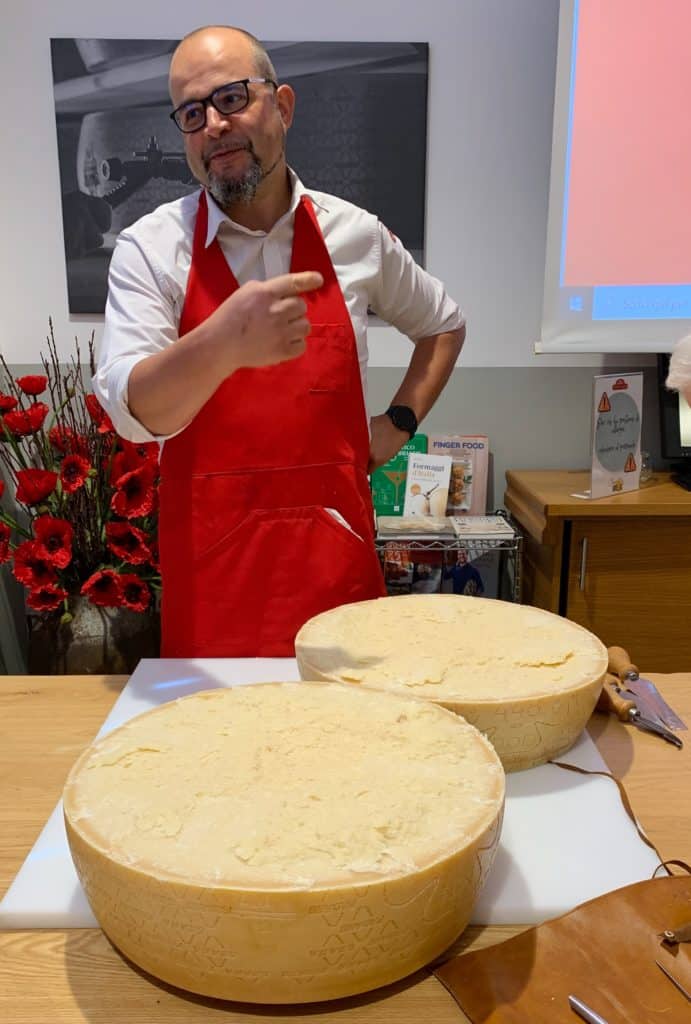
After we were sufficiently stuffed with cheese, we drove north to Feltre, a small town located at the southern base of the Dolomite mountain range. We went on a short hike to the Alboino Castle, which provided sweeping mountain views.


Day two started with a foggy early morning visit to the Lattebusche factory in Belluno, where they make Piave PDO and Montasio PDO. This is the only facility where Piave PDO is produced, which is uncommon for a PDO cheese. Our guides at this facility stressed that while this cheese is produced using modern technology, the technique and recipe are exactly the same as they were in the past. Before mechanization, there was more variation in each wheel, with the help of machines the production process has been standardized and the final product is more uniform.


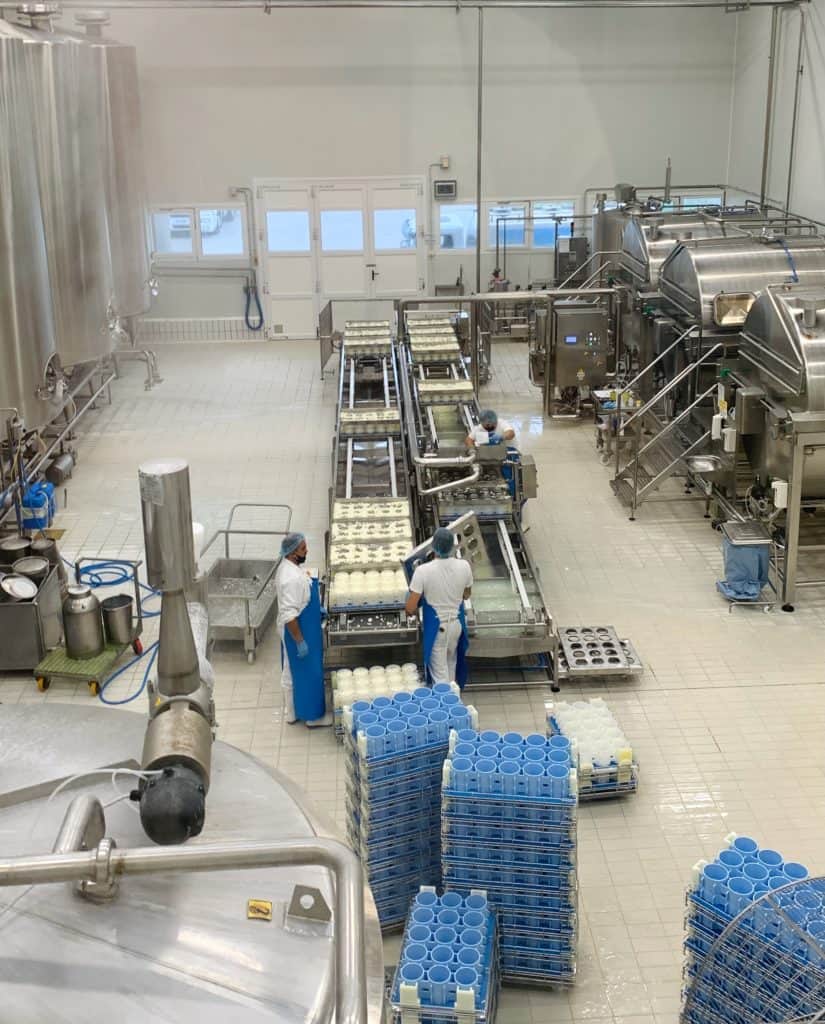
Dairy farming is an important part of Belluno’s cultural and economic history. In 1872, parish priest Antonio dalla Lucia established the first cooperative dairy in the country as a way to help struggling farmers during an economic downturn. These cooperatives helped farmers manage resources ethically and laid the foundation for the future thriving Belluno dairy industry.

For our last creamery visit, we traveled to Latterie Vicente to learn about the two versions of Asiago PDO, Asiago Stagionato PDO and Asiago Fresco PDO. Both are named for the Asiago Plateau, a geographical area comprising seven small communities in Italy’s Veneto region. Asiago Fresco PDO is the younger version, aged anywhere from 30 to 50 days. It is a semi-hard cheese with a buttery and tangy flavor. Asiago Stagionato is aged from two to 15 months, it is much harder than the Fresco version and its flavor varies depending on age, when younger it is yeasty and sweet, as it ages it develops a more complex and spicy flavor.
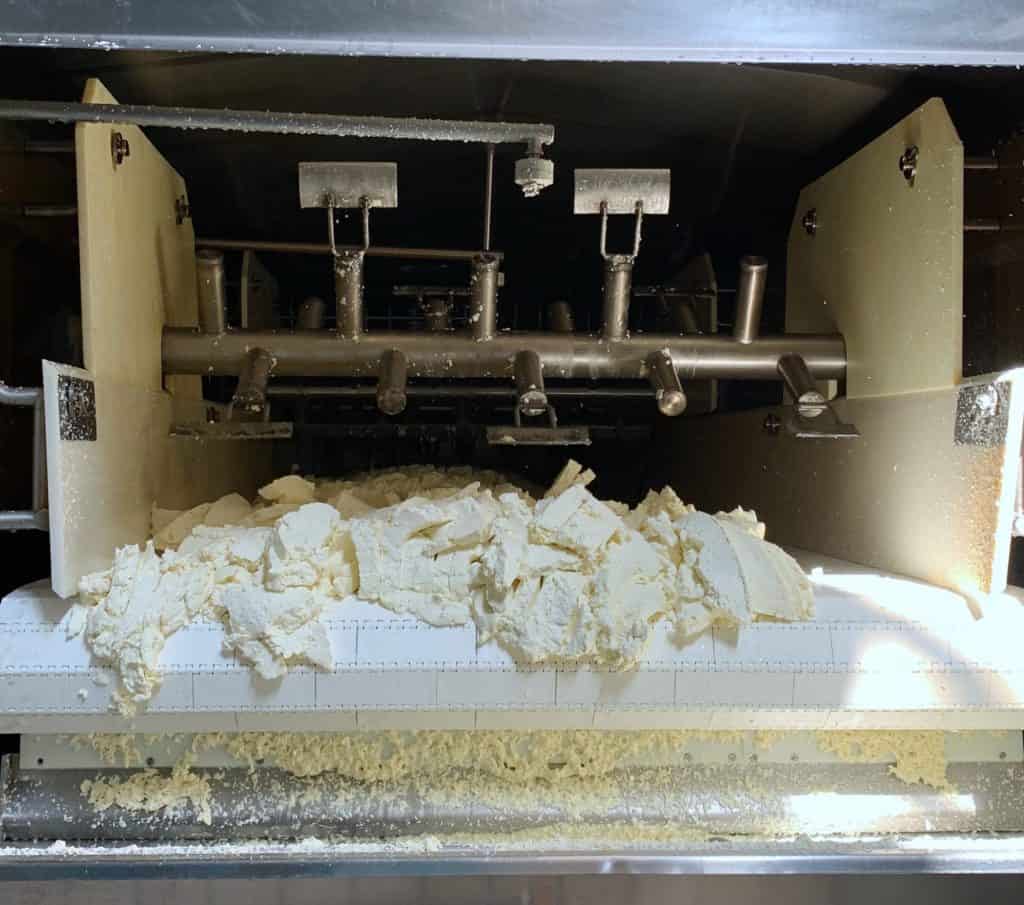
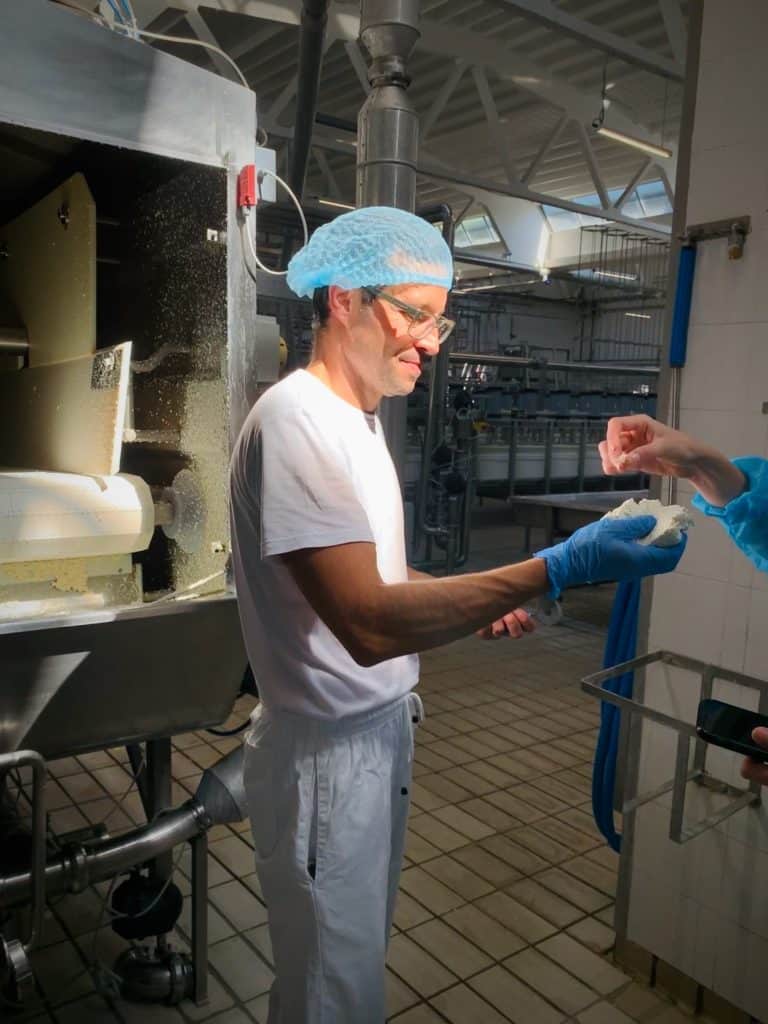
Asiago PDO has salt added to the curd during the cheesemaking process, because of this, it only sits in salt brine for two days. For comparison, Parmigiano Reggiano PDO sits in salt brine for 25 days, and Grana Padano DOP is in salt brine for anywhere from 14-30 days.
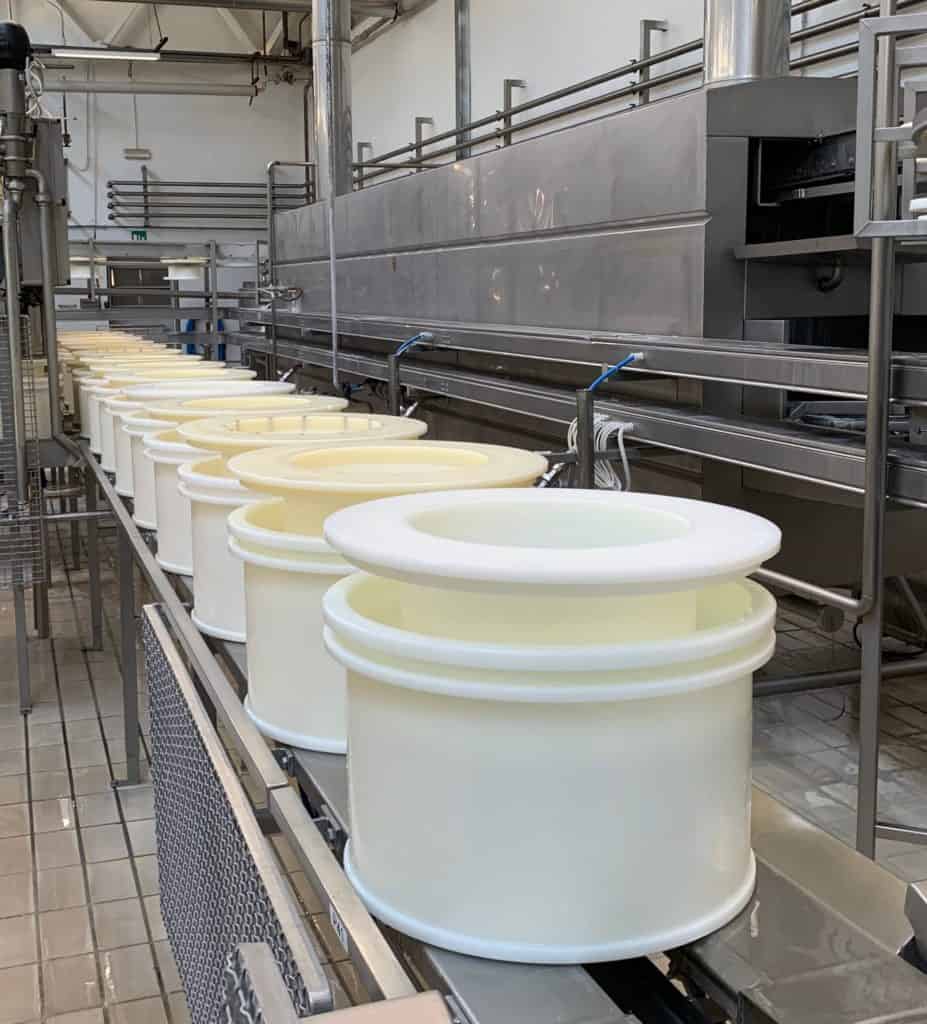
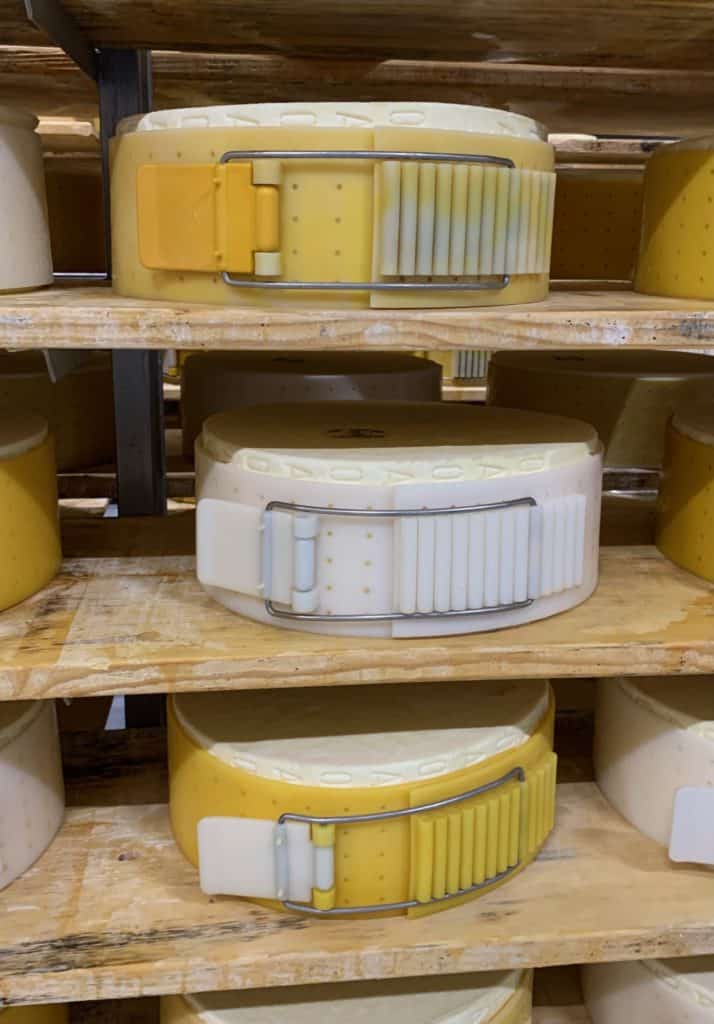


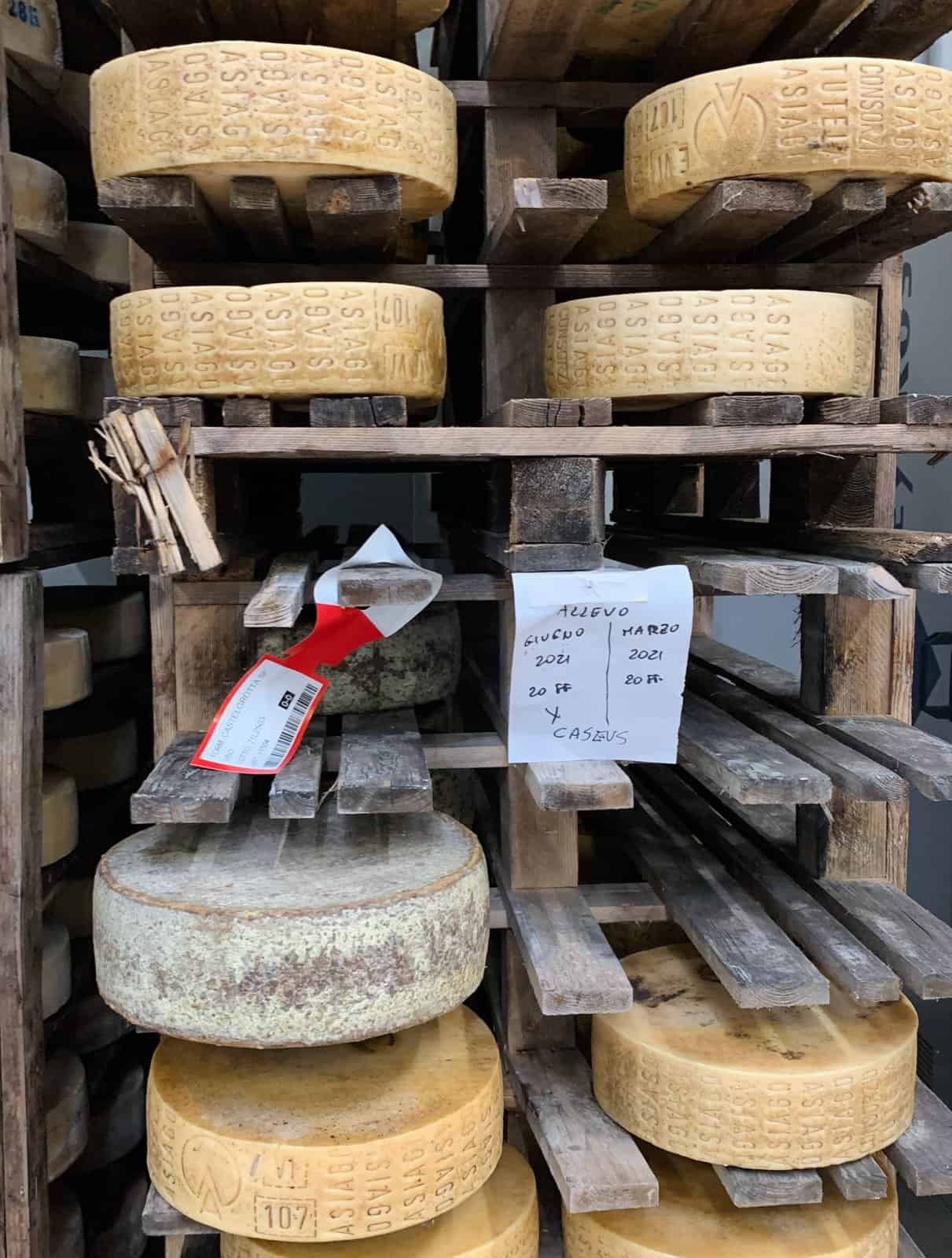

During this creamery visit, we were able to walk on the make room floor and follow Asiago’s journey from milk, to curd, to delicious cheese ready for consumption. It was incredible to see how people and machines work together to create the finished product. Some tasks are easy to mechanize and can help an operation save on labor costs, but there is no replacement for the cheesemaking knowledge that has been passed down for centuries.
After our last creamery visit we traveled to Venice for our final night of the trip. The city of canals was as beautiful as we had hoped and we enjoyed meandering through the small, winding streets. The evening would not have been complete without a late-night trip to score some gelato!
Travel Tip: Late September is an ideal time to visit Venice since it is cooler and less crowded than during the summer months. Heads up! Starting in 2023 Venice will be instating a ticketing system for day-trippers so be sure to book and plan in advance.
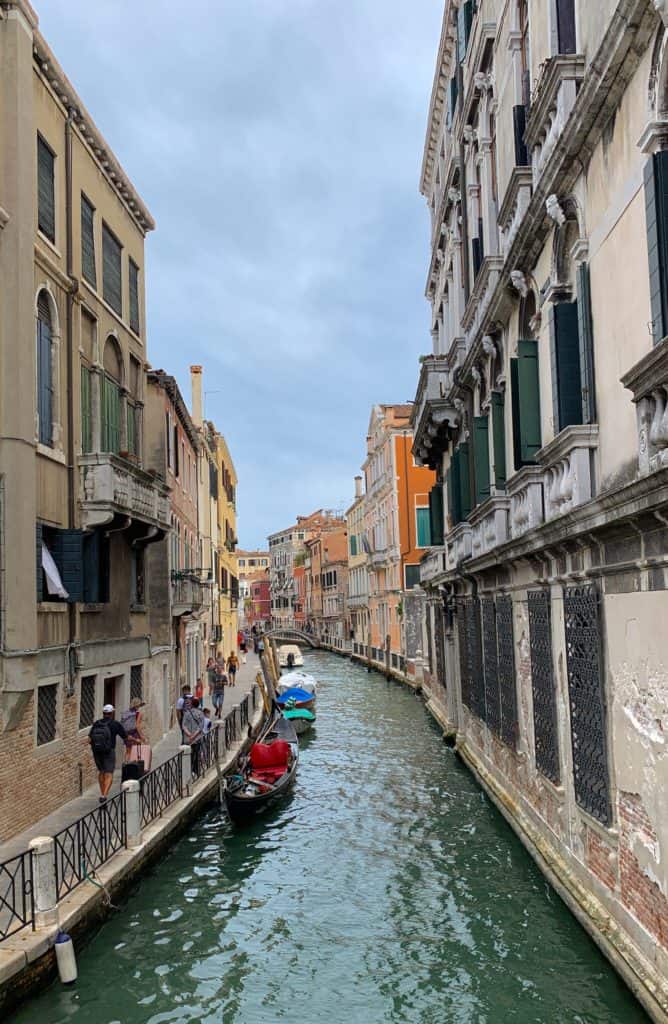
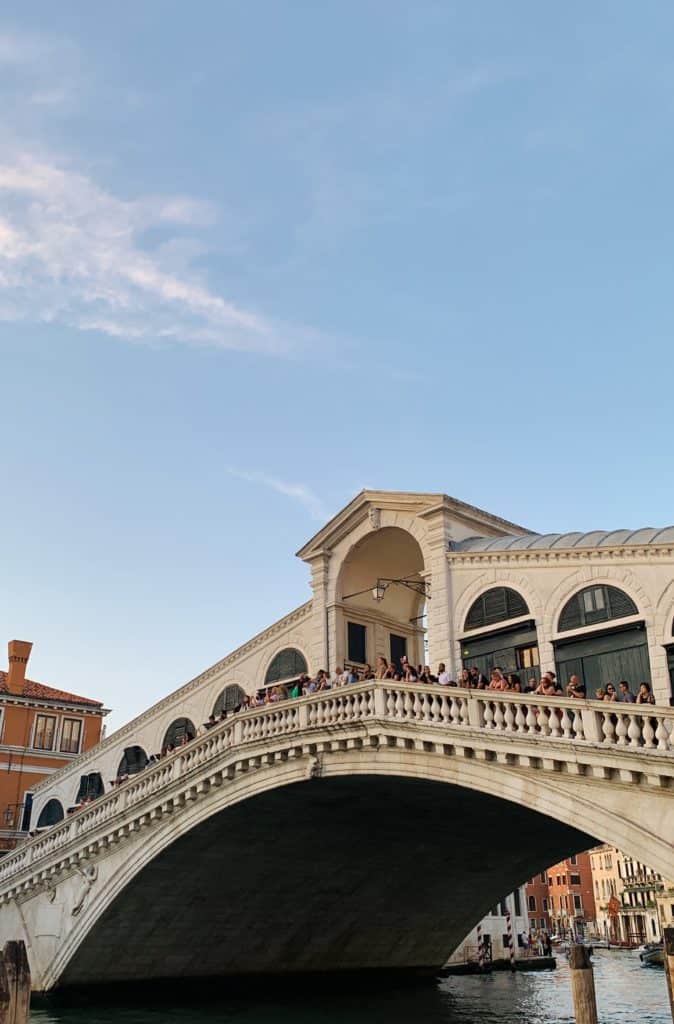

AOP Agriform PDO Cheeses
Parmigiano Reggiano PDO
Produced with raw cows’ milk, Parmigiano Reggiano is a partially skimmed cheese with a hard, finely granular texture, white or pale yellow in color with a natural pale-yellow rind. Parmigiano Reggiano’s different stages of maturity are recognized by aging seals given at 18 months, 24 months and 30 months.
Grana Padano PDO
Grana Padano is a hard cheese produced from raw, partially skimmed cow’s milk. Its different stages of maturity are recognized by aging seals given at 9 months, 16 months and 20 months.
Piave PDO
Piave is a hard, cooked, pressed cheese made from the pasteurized milk of two milkings—morning and evening—one of which is usually skimmed. Piave is sold at five different ages: Fresco at at 20-60 days, Mezzano at 61-180 days, Vecchio over 181 days, Vecchio Selezione over 12 months, and Vecchio Riserva over 18 months. Only the Mezzano, Vecchio, and Vecchio Selezione are available in the United States.
Montasio PDO
Made from partially skimmed, raw cow’s milk, Montasio is produced in the area of Alpe Guile (Guilian Alps) in the province of Friuli in the northeastern corner of Italy. It is sold at five different ages: Fresco over 60 days, Mezzano over 4 months, Stagionato over 10 months, and Stravecchio over 18 months.
Asiago Fresco PDO
Asiago Fresco is a partially skimmed cheese of semi-cooked curd with a white, slightly yellowish color, marked and irregular eyes and a thin, flexible rind. Asiago Fresco must be aged for at least 20 days.
Asiago Stagionato PDO
Asiago Stagionato is a partially skimmed hard cheese with a semi-cooked curd. The cheese must be aged for two months, after which it is sold at three different ages: Mezzano at at 4-6 months, Vecchio at 10-15 months, and Stravecchio over 15 months.



